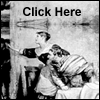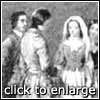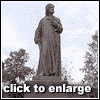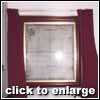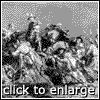
|
Part One: The Covenanters, Who Were They? By Brian Orr Have a question? Click Here to go to Brian's own Discussion Board!
It is easy to say that they were the Presbyterians who signed the National Covenant to uphold the Presbyterian religion in 1638. Presbyterians also signed the Solemn League and Covenant of 1643. But their role in history isn't as simple as that. The Covenanter's stand for political and religous liberty led to almost a century of persecution and their widespread migration to Ireland and the American colonies. Their struggles brought an end to 500 years of French (Catholic) influence in Scotland and contributed to a close alliance with England. And their refusal to acquiesce in the face of overwhelming odds eventually led to the union of the thrones of Scotland and England in 1603 and over time, the invitation to the Protestant William of Orange to take the throne in 1690. This move ultimately led to the political Act of Union in 1707 between Scotland and England. Not Just Another Religion
The story begins with the decline of the monasteries as they became less concerned with spiritual matters and more with the economics of land tenure and the material benefits the rents and tithes provided. The office of Bishop was frequently filled by political appointees from whom the monks, friars and nuns took their lead. It did not help matters that even the King took advantage of the system to ensure that illegitimate children were cared for by such appointments - James I of Scotland for example had his 11 year-old son created Archbishop of St Andrews, securing for him the incomes that flowed to the post. The real needs of the populace at large was for true, local, pastoral care which the state was so patently not delivering.
The banner of reformation in Scotland was taken up by John Knox (1515-1572), who after a colourful early life (he was a galley slave for a while) brought Calvinist beliefs to Scotland in 1558. Knox was soon a leading light and a zealous politician who made a treaty with Queen Elizabeth I of England that gained for himself and his friends the direction of their affairs. Knox was undoubtedly intolerant and a fanatic but he had a powerful influence in moulding the religous and educational life of Scotland.
Melville and his supporters continued to preach and circulate manuscripts and books illegally and gathering the support and admiration of the working people. It was the accession of Charles I in 1625 that was a catalyst for yet more change and Civil War. Charles particularly threatened to take back the the churches' rights to property and tithes which greatly alarmed every landholder in Scotland. Charles was also a stubborn and extravagant man under the influence of his wife, Henrietta Maria, a French-Catholic princess. Worse still, two of his ministers were the Earl of Strafford, who persecuted the Scots in Ulster, and Archbishop Laud who in 1637 sought to impose on the Scots a new prayer book and the reintroduction of the mass and other Catholic practices. Laud's decision to go ahead with reforms were both the cause and pretext for revolt. The National Covenant
The National Covenant was not anti-government nor did it refer to the bishops but King Charles over-reacted and regarded them as rebels. Charles assembled an army but relented and allowed the first General Assembly for 20 years to be convened at which time the Assembly abolished the Bishops. Charles rejected the decision and once again the army was mobilised while the vast majority of Scots united behind the Presbyterian cause.
In 1640 the Covenanting army under Alexander Leslie marched into northern England and occupied the city of Newcastle in Northumberlandplan. Charles I desperately sought to retain his throne, calling, dismissing and recalling Parliment several times. In 1641 Parliament presented Charles with a "Grand Remonstrance" which listed the acts of oppression and tyranny for which he had been responsible in the past sixteen years. He attempted to arrest some Members of Parliament but failed and in January 1642 he left London.
For the full text of the National Covenant, click HERE.
At last it seemed to the Covenanters that their goal was in sight but joy was relatively short lived as there were further bloody battles at Marston Moor (1644) and Naseby (1645) before King Charles I was finally defeated.
After the King's execution in 1649, the Scots immediately proclaimed his son, Charles II, King of Scotland conditional upon him accepting Presbyterianism and the Covenants, which he signed in June 1649. This was unacceptable to Oliver Cromwell and there followed a bloody battle at Dunbar where he showed no mercy, exiling survivors to Plantations in America and Ireland. From then until 1660 the Covenanters were again suppressed.
For the full text of the Solemn League and Covenant, click HERE.
In Scotland the Act of Uniformity 1662 was mirrored by an Act of Proclamation in 1662 which banished all ministers who did not have a bishop's licence. Over 300 ministers were ejected from their manses. There were also fines imposed and collected by military force which led to more bloodshed. The Covenanters were defeated in a skirmish at Rullion Green near Edinburgh and over a 100 prisoners taken and executed as an example to others.
By 1670 the land was under military rule with troops (the Highland Host) billetted among the people. In 1679 Archbishop Sharp was assassinated and the Covenanters had modest military success against General John Graham of Claverhouse in June 1679. But the Covenanter army of over 5000 soldiers was defeated at Bothwell Brig by Monmouth with 400 left dead and 1500 prisoners taken. Two ministers were hung and others executed. Some 200 were sentenced to transportation to the West Indies but their ship sank in bad weather and all were drowned.
Despite defeats and severe penalties the Covenanters continued to resist led by such ministers as such ministers as Andrew Melville, Donald
Cargill and Richard Cameron, known as "Society Men" and also "The Cameronians". Cameron was killed in the summer of 1680 but not before publishing a Declaration at Sanquhar calling for the removal of Charles II. The strongest and most extreme forms of Covenanting were to be found in Ayrshire and the south west in Dumfries and Galloway where dissenting ministers had substantial congregations. Their resistance took the form of guerilla tactics and attendance at open air meerings or conventicles. They were harried by the government suspicious of treason, and by heavy handed military and judicial reprisals, especially after 1681.
It was no better for them when James II took the throne in 1685. James' open support for the mass and appointments of Catholics to positions of power confirmed the worst fears of the Protestants. Before too long, other forces led to the call for William of Orange to take the Crown, and the Battle of the Boyne in 1690 finally assured the Protestant succession in Britain - and with it tolerance of Presbyterianism.
Meet the Author, Brian Orr, Researcher with The Guild of One Name Studies
Back to The Covenanters, Main Page
Part One: The Covenanters: Who Were They?
Covenanters Time Line
|
Thursday, December 26th, 2019
Attention visitors: Tartans.com is back. Please note that this is a snapshot of the site as it existed nearly 20 years ago and you may encounter broken links; we are still combing through the site and correcting those as we find them. Please also note that some sections are currently not functional, primarily the discussion forums/clan chat boards.
|
** HOME - First Time Visitors - Glossary - - Contact Us ** Awards | Bibliography | Clan Calendar | Clan Chat | Clan Finder | History | Famous Scots | Genealogy | Great Hall of the Clans | Links | News and Features | Scots on the Net | Search | Site Map The Gathering of the Clans
Copyright 1995- Tartans.com - All Rights Reserved. |
